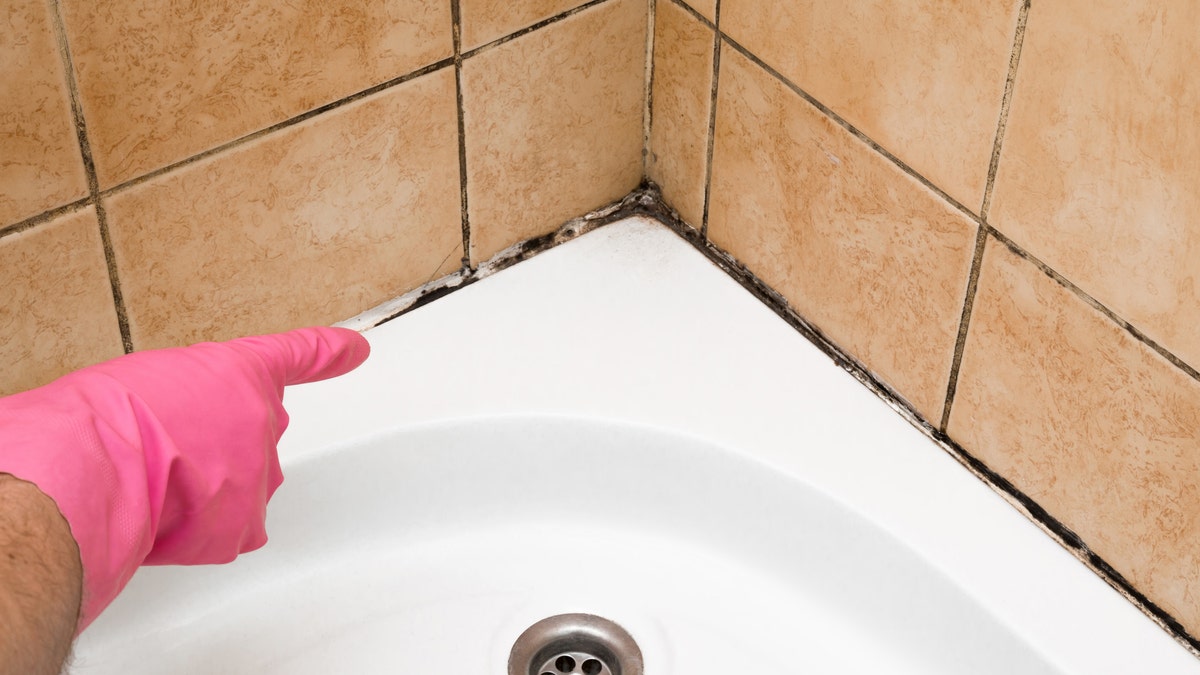
Keep it from coming back with mildew cleaner, too. (iStock)
Jump start your spring cleaning plans with these five tricks for removing mold and mildew in your home – and keep it from returning!
Check for Plumbing Leaks
If you see mold near water pipes, waste lines, icemaker lines or plumbing fixtures, chances are the mold is feeding off a nearby leak. Let the water run while you check the pipes and surrounding area for damp spots to see if there’s mold from water leaking. Remember that water can travel in any direction—down, sideways or even up when it wicks into absorbent material like drywall—so the actual leak may be some distance from the mold. Once the leak is found, fix it.
Don’t Ignore Mold

Mold can be an early warning sign of a moisture problem inside walls or ceilings that could cause an expensive problem like wood rot. Avoid the temptation to just wipe the mold away and forget about it—find and stop the water source. (iStock)
Mold can be an early warning sign of a moisture problem inside walls or ceilings that could cause an expensive problem like wood rot. Avoid the temptation to just wipe the mold away and forget about it—find and stop the water source. Learn how to prevent mold before it starts.
Look for Outside Leaks
If mold is growing on an exterior wall or ceiling, first look for a leak in the wall or roof as a test for mold. Measure from the moldy area to a reference point like a door, then find the spot on the other side of the wall or ceiling. Closely inspect nearby vents, roof flashing, decks, window wells and anywhere wood is rotting. Look for ground sloping toward the house and downspouts emptying next to the wall. If the ground around the house gets too wet, moisture will wick into the foundation or slab and become persistent dampness. Make sure you properly install flashing when you’re fixing the leak.
Inspect the Ductwork
If mold forms on the ceiling under a duct or register and there’s no sign of a roof leak, badly insulated ductwork may be the cause. Warm, moist air condenses and forms water on ducts carrying cold air through the attic or crawl space. The condensation is a sign that the duct is uninsulated or missing a vapor barrier. Eventually the water saturates the insulation and drywall and mold spores (which are everywhere) take root. In cold weather, the reverse happens. Moisture forms anywhere warm air escapes—for instance, at unsealed joints between duct sections. Inspect your ductwork as a test for mold. Learn how to properly insulate your basement rim joists.
Is it Mold or Dirt?
Most mold is unmistakable, but sometimes small or largely hidden growths just make a surface look dirty. A quick test for mold can be done when you dip a swab in diluted bleach (1 part bleach, 16 parts water) and dab it on the wall. If the spot quickly lightens (or keeps coming back after cleaning), assume it’s mold. Mold test kits are available that detect the presence and identify the type of mold, but they won’t help determine the cause or what to do about it.



















